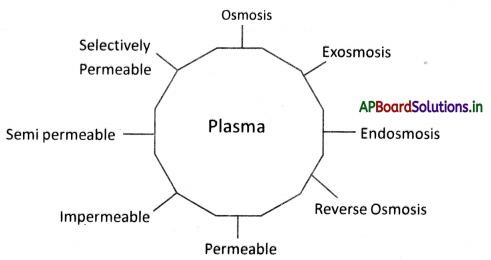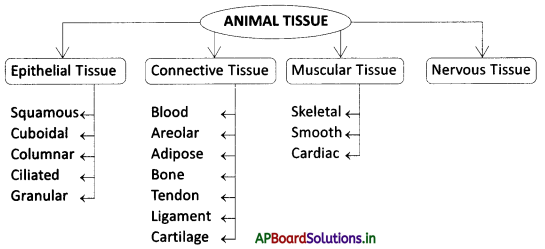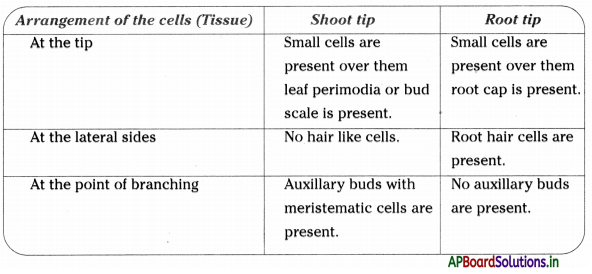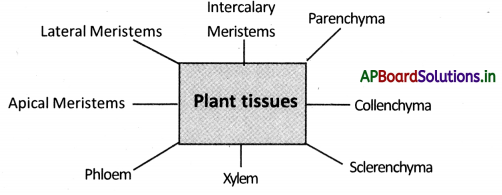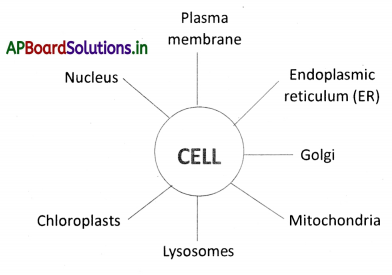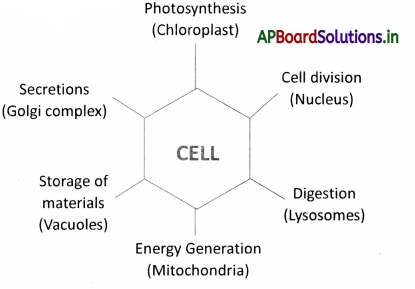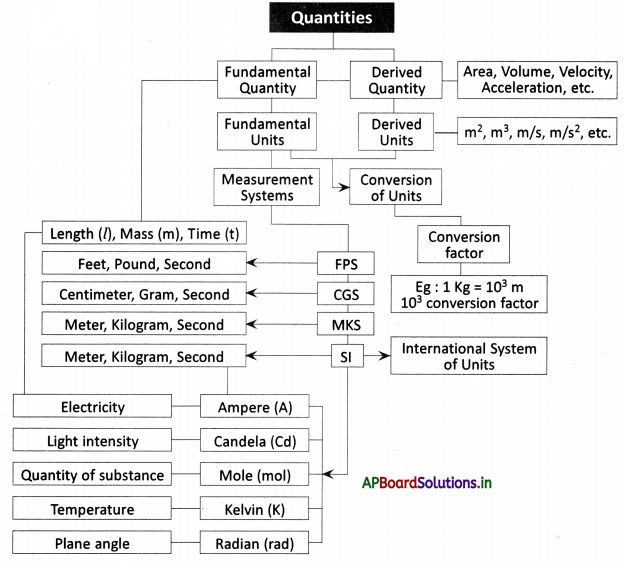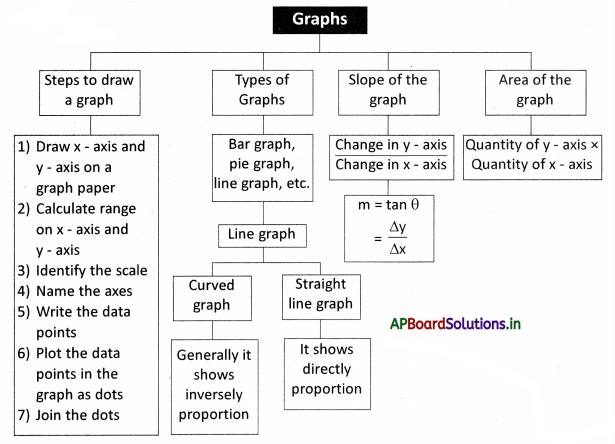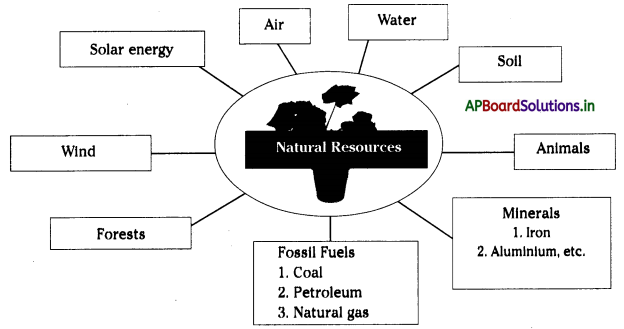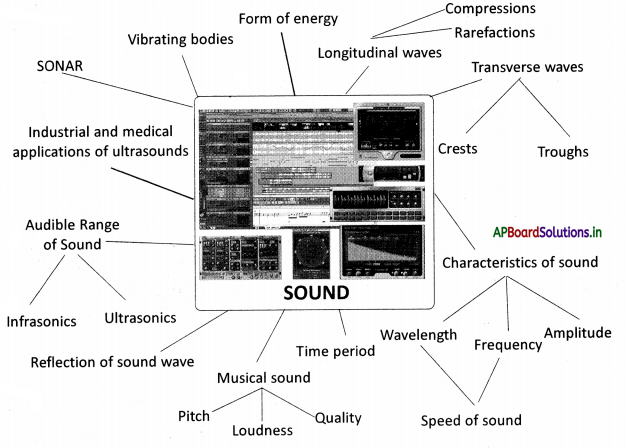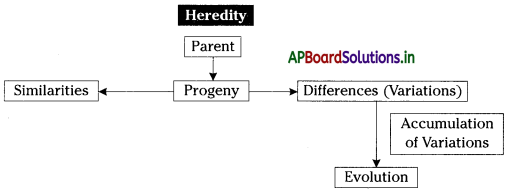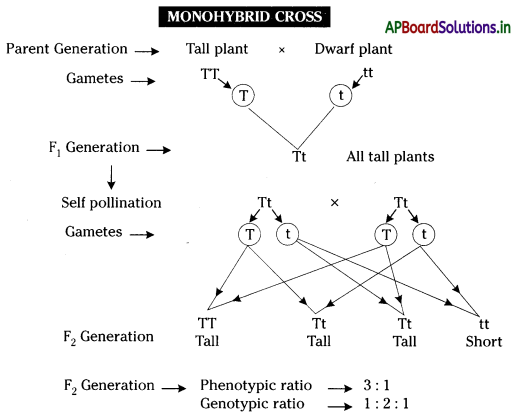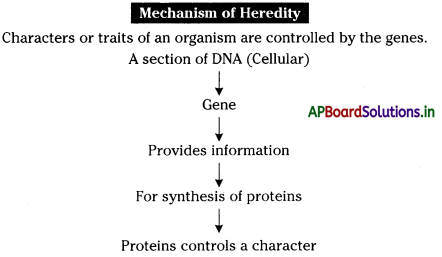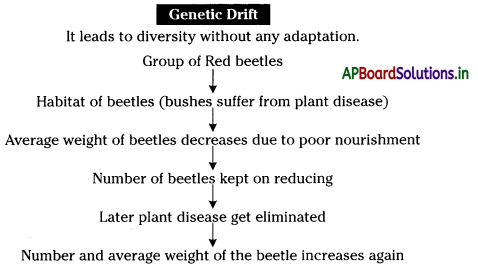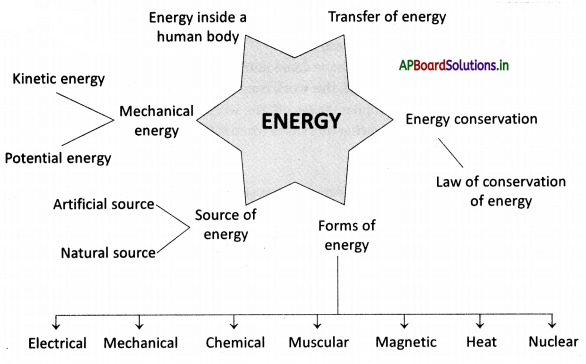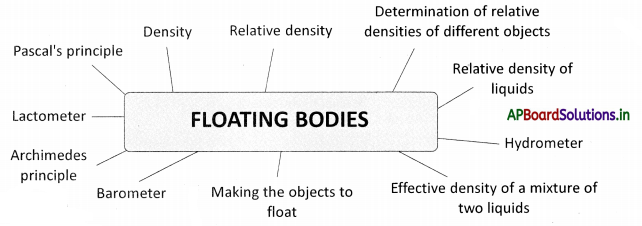Students can go through AP State Board 9th Class Biology Notes Chapter 5 Diversity in Living Organism to understand and remember the concept easily.
AP State Board Syllabus 9th Class Biology Notes Chapter 5 Diversity in Living Organism
→ Diversity is the symbol of nature.
→ Diverse organisms are grouped based on the similarities and differences found among them.
→ The presence of differences between organisms of the same species is called variation.
→ Plants those having two seed leaves are dicotyledons while those having single seed leaves are monocotyledons.
→ Variation between different species is always greater than the variation within a species.
→ Variations form a basis for the selection of characters to group organisms.
→ No two organisms are identical in nature.
→ The way in which the organisms may have evolved is classification.
→ Classification is the systematic study of organisms present in nature with respect to their evolution.
→ Classification helps us in exploring the diversity of life forms.
→ Classification helps to study the organisms in a proper and systematic manner.
→ Classification helps in understanding the relationship among the organisms and their interdependence.
→ Classification gives us an idea of evolution.
![]()
→ Classification helps to make comparisons in an easier way.
→ Charles Darwin proposed a theory known as Natural selection in 1859 and wrote a book on evolution known as ‘Origin of Species.’
→ In the first and second centuries AD, Charaka and Sushruthad classified plants on the basis of their medical importance.
→ Parasar in his book ‘Vrikshayurveda’ classified several land plants on the basis of the structure of flowers.
→ In 1758, Carl Von Linnaeus classified living organisms into Animalia and Plantae.
→ The major characteristics considered for the classifying all organisms into five major kingdoms by Whittaker are
- Whether they are made of prokaryotic or eukaryotic cells.
- Whether the ceils are living singly and organized into multicellular and thus complex organisms.
- Whether the ceils have a cell wall and whether they prepare their own food
→ According to Whittaker, all living organisms are classified into five kingdoms namely
- Monera
- Porifera
- Fungi
- Plantae
- Animalia.
→ All cells are similar and are originated from a single ancestor ceil called Last Universal Common Ancestor (LUCA).
→ Recently Cavalier-Smith (1998) classified the organisms into six kingdoms namely Bacteria, Protozoa, Chromista, Plantae, Fungi, and Animalia.
→ Plants are divided into five groups: Thailophytes, Bryophytes, Pteridophytes, Gymnosperms and Angiosperms.
→ Animals are divided into ten groups: Porifera, Coelenterata, Platyhelminthes, Nematoda, Annelida, Arthropoda, Mollusca, Echinodermata, Protochordata, and Vertebrate.
![]()
→ Monera kingdom includes unicellular prokaryotes. Eg: Bacteria, Anabaena.
→ Protista includes unicellular or multicellular eukaryotes. They are autotrophic or heterotrophic organisms. Eg: Paramoecium, Algae, Diatoms.
→ Fungi include uni or multicellular organisms which reproduce by spores.
Eg: Yeast, Mushroom, Lichens, etc.
→ The Porifera group animals have pores or holes in the body. They form a canal system in the body. Eg: Sycon, Spongilla.
→ The coelenterate animals are diploblastic and have a body cavity or coelom. Eg: Hydra, Jellyfish.
→ In Platyhelminthes animals, the body is flat, bilaterally symmetrical, and are triploblastic. Eg: Tapeworms, Liver flukes.
→ In nematodes, the body is round bilaterally symmetrical triploblastic and pseudocoelomates Eg: Wucheraria Bancroft, Ascaris.
→ Annelids’ body is bilaterally symmetrical, triploblastic segmented, and has a true body cavity. Eg: Earthworm, Leech, Nereis.
→ Arthropods are bilaterally symmetrical, segmented, and have jointed legs.
Eg: Prawn, Housefly, Cockroach.
→ In Molluscs, the body is bilaterally symmetrical, Coelomic cavity is reduced and little segmented Body differentiation starts. Eg: Octopus, Pila, Unio, etc.
→ Echinoderm animals are triploblastic, Coelomate, and Spiny skinned animals.
Eg: Echinos (Sea urchin), Antedon, Asterias (Starfish).
→ Protochordate is bilaterally symmetrical, triploblastic coelomate animals. Notochord may not present at all stages in their life. Eg: Balanoglossus, Amphioxus.
→ Vertebrates have a true vertebral column and internal skeleton.
![]()
→ The naming of organisms with distinctive scientific names is called nomenclature.
→ The binomial nomenclature is made up of two words a generic name and a specific name and was introduced by Carl Linneaus.
→ Diversity: Variety of people or things that are very different from each other.
→ Biodiversity: Variety of life forms found in a particular region.
→ Variation: Difference in structure or function, which is shown in individuals of the same species.
→ Cotyledon: The first leaf that is grown from seed.
→ Monocotyledons: Plants having single cotyledons.
→ Dicotyledons: Plants having two cotyledons.
→ Lineage: People of the family who lived in the past; the way ¡n which members of a family are descended from other members.
→ Classification: It ¡s the systematic study of organisms present in nature with respect to their evolution.
→ Designation: Formally choose for a particular purpose.
→ Thermophiles: Prokaryotes that live in hot springs and other places where the temperatures were near or even above the boiling points of water.
→ Halophiles: Prokaryotes that live in places of very high salt concentration.
→ Ancestor cell: A cell that lived ¡n the past from which a modern cell has developed.
→ Interbreed: To produce young ones from parents of different breeds or groups.
→ Solitary: Only one.
→ Cryptogams: Non-flowering and non-seed bearing plants.
![]()
→ Phanerogams: Flowering and seed-bearing plants.
→ Porifera: Organisms with holes.
→ Bilaterally symmetrical: The left and right halves of the body have the same design.
→ Triploblastic: Different tissues are formed from three layers of cells.
→ Coelom: Space present inside the body.
→ Pseudocolor: False cavity present inside the body of an organism.
→ Arthropod: Jointed legs.
→ Protochordate: Chordates are developed from these animals. They are marine animals.
→ Notochord: A cylindrical chord/string-like structure which ¡s along mid-dorsal line ¡n all chordates.
→ Cold-blooded animals: These animals can change their body temperature according to their surroundings.
→ Hippocampus: Known as a sea horse. Fish are like animals in which males carry babies as our mothers.
→ Endangered: A type of animal or plant that may soon no longer exist. e.g.: Whale.
→ Nomenclature: Naming of organisms with a distinctive scientific name.
→ Flora: AIl plant life ¡n a region.
→ Fauna: All animal life in a region.
→ Binomial nomenclature: The binomial nomenclature is made up of two words a generic name and a specific name.
→ Evolution: Change gradually.
The scientific idea that plants and animals developed gradually from a simple to more complicated forms.
![]()
→ Animal kingdom: One of the five major groups into which all living things are organized by Whittaker. The biggest stage in classification.
→ Domain: An area of activity, interest, or knowledge. The organization of organisms starts here formed by the union of one or two parts.
→ Phylum: One of the major groups into which the animal kingdom is divided.
→ Class: A term used for describing a collection of similar orders.
→ Order: A collection of similar families.
→ Family: Principal sub-division of an order of animals/plants.
→ Genus: Collection of similar species.
→ Species: A group of plants or animals having common characteristics that are similar enough to interbreed and perpetuate.
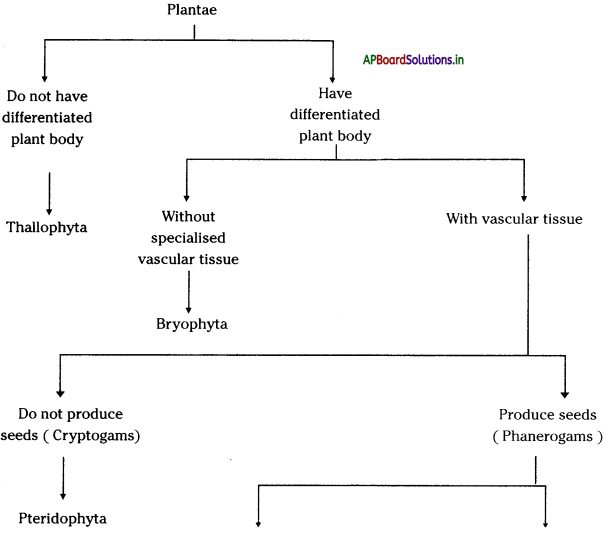
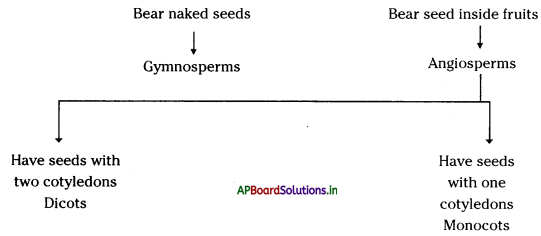
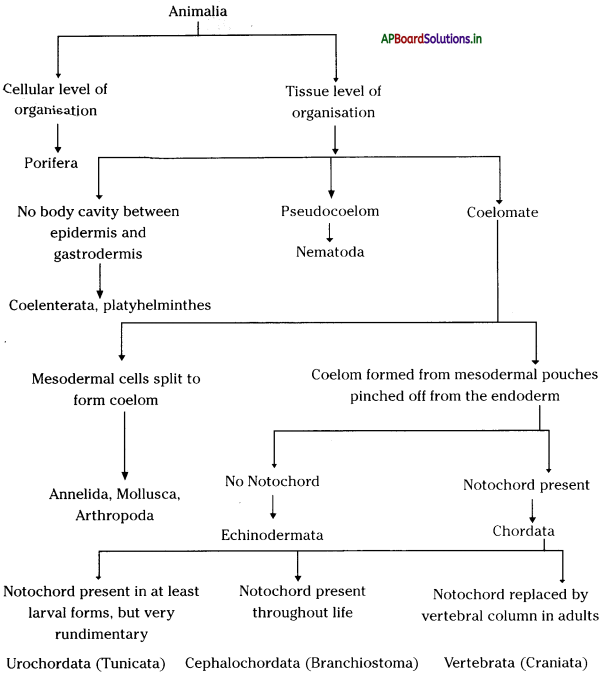

→ There are various hypotheses as to the origin of prokaryotic and eukaryotic cells. Because all cells are similar in nature, it is generally thought that all cells came from a common ancestor cell termed the Last Universal Common Ancestor (LUCA). These LUCA eventually evolved into three different cell types, each representing a domain. The three domains are the Archaea, the Bacteria, and the Eukarya (a classification as suggested by Woese).
→ Archaea and bacteria are prokaryotic cells that are they do not have a membrane-bound nucleus, the nuclear material is presently dispersed in the cytoplasm.
→ The cell walls of bacteria unlike the archaea contain fat-like chemical peptidoglycan.
→ Eukarya have eukaryotic cells or cells having a membrane-bound nucleus.
![]()
→ Fishes are cold-blooded animals. They can change their body temperature according to their surroundings. Most of the fishes are oviparous but some like sharks give birth to young ones.
→ Father of Taxonomy: Carl Von Linnaeus
- Carl Von Linnaeus was born in Sweden and was a doctor by profession.
- While serving as a personal Physician of a wealthy gov¬ernment official Linnaeus studied the diversity of plants in his employers garden.
- Linnaeus published a book ‘Systema Naturae’ from which all fundamental taxonomical researches have taken off.
- In 1758 Carl Von Linnaeus proposed a system that was dominated classification for centuries.
- Linnaeus gave each organism two names denoting genus and species.
